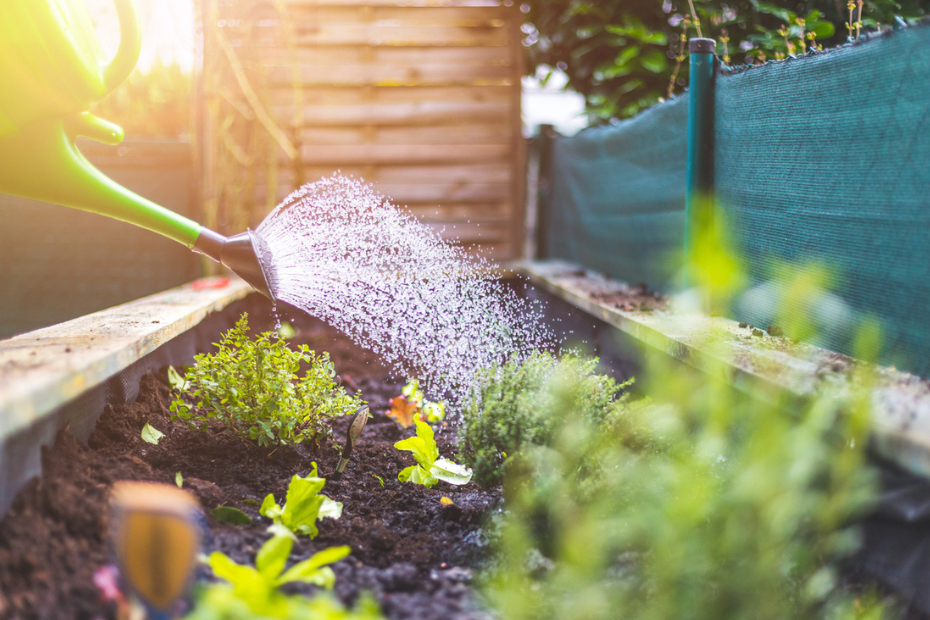Published June 23, 2023 • 6 Min Read
For many Canadians, home gardens offer a much-loved way to unplug. On top of providing a healthy excuse to get moving outdoors, gardens also contribute to a healthy environment. And since the economists are telling us food prices are unlikely to come down anytime soon, why not skip the grocery store veggies and try growing your own? Yet like many passions, gardening can get expensive when you start adding up the cost of plants, fertilizers and watering.
If you’re looking to exercise your green thumb in an eco-conscious way that won’t cost you the earth, dig into these seven gardening hacks that can help save you money – and our planet.
Grow your own food
Harvesting food from your own garden can lighten your grocery bill, help you eat better and save packaging. Plus, you get bragging rights when you sit down to meals with family and friends.
The homegrown trend caught on during the pandemic as Canadians turned to their backyards. According to Statistics Canada, sales in the greenhouse, sod and nursery industries surged 7.5 per cent to $4.7 billion in 2021, with Ontario making up more than half of total sales.
It’s not surprising more Canadians are doing home gardening. Food prices have risen 18 per cent in the past two years, according to RBC Economics. According to its projection, even though prices have stablished somewhat, a decline from currently elevated levels is unlikely given challenges like extreme weather and labour shortages.
Gardening is more than just convenience and cost savings. Homegrown food is also better for your health and your tastebuds. Instead of food picked to survive shipping, you’re eating freshly picked fruits, veggies and herbs at their peak. No access to a yard? Container gardening or joining a community garden can be great options.
The environmental benefits are also well documented. Growing your own food helps reduce emissions created by transporting produce to supermarkets. Global freight transportation related to vegetable and fruit consumption is responsible for 36 per cent of food-miles emissions – almost twice the level of greenhouse gasses released during their production, according to science journal Nature Food.
Make your own compost
Compost helps feed your soil. Adding compost to your garden is an excellent way to make nutrient-packed soil, improve soil structure and boost your garden’s ability to retain water. You can make compost from fruit and veggie scraps, yard waste and organic materials like coffee grounds. Making your own garden compost also helps save money over buying store-bought compost.
Water your plants with rainwater
Why pay to water your garden when you can hydrate it for free with a rainwater collection system? Install a rain barrel to collect up to hundreds of litres of runoff from the roof through your eavestrough downspouts. Not only will you save on utilities and conserve water, rainwater is also rich in micronutrients and free of chlorine and fluoride found in tap water, which can harm the beneficial microbes you want in your soil.
Consider native plants
When you’re at the nursery, consider strolling past the many popular plants imported from around the world and choose native plants instead. What is a native plant? It’s an uncultivated plant that’s indigenous to your geographic region. Since they tend to be more pest- and weather-resistant, they can save you time and money. Other benefits, according to the Canadian Wildlife Federation, include:
-
Helping wildlife: Native plants are better at nourishing local wildlife at both the predator and prey level, which can help ecosystems flourish. For example, local insects that are supported by native plants in turn help nourish local bird species. (Bonus: you’ll feed birds the natural way, which saves on bird seed!)
-
Feeding pollinators: Monarch butterfly caterpillars depend exclusively on one native plant — milkweed — for food. Keep monarchs happy, and you’ll keep other species happy, including common foods like apples and strawberries that depend on pollination, a service provided by monarchs and other pollinators.
-
Hardiness: Plants that have grown naturally in your area over thousands of years generally require less water and fewer pesticides and fertilizers. They can withstand the seasons better than plants that haven’t adapted to local conditions.
-
Keeping out invasive species: Native plants are generous at creating seeds, which can help keep your garden and local natural areas stocked with beneficial native plants instead of invasive species.
Use organic mulch
Mulch is a great gift for your garden. It can help conserve moisture, minimize weeds, regulate soil temperature, promote healthy root growth, feed soil and improve soil structure – all of which can save you money, water and elbow grease. Free organic mulch options you might have on your property include straw, pine needles and shredded leaves (though you’ll need to replace leaves as they decompose). Wood chips may also be available from your municipality for little to no cost.
Group companion plants together
Companion planting is a money- and labour-saving technique that invites organic gardeners to grow certain plants together in the same row. Such plants naturally help each other succeed while improving soil quality and reducing the need for pesticides and fertilizers. Companion planting is a long-cherished Indigenous practice that’s now being studied by Canadian agricultural scientists.
Planting beans with corn and squash, for example, is an Indigenous combination known as the “Three Sisters.” Corn provides a structure for beans to climb, beans add nitrogen to the soil, and the squash offers ground cover and keeps weeds down. The companions create a cycle of reciprocity whereby each plant gives and receives what it needs from other plants and the land, according to Agriculture and Agri-Food Canada.
Plant a tree in your yard
Trees and shrubs are workhorses in your yard when it comes to climate change. Besides providing food for people and animals, offering wildlife habitat, improving soil and water conservation, they devour harmful greenhouse gasses. Be sure to plant a suitable tree in the right place at the right time so it can thrive in your environment. Its shade can also help moderate temperatures inside your home, which can help reduce your monthly energy monthly bill, according to Tree Canada, a non-profit dedicated to tree planting. Search online to see if your municipality offers a free or discounted tree planting program for homeowners and businesses.
Here’s to a summer of gardening and saving! (It brings a whole new meaning to “green” thumb, doesn’t it?)
This article is intended as general information only and is not to be relied upon as constituting legal, financial or other professional advice. A professional advisor should be consulted regarding your specific situation. Information presented is believed to be factual and up-to-date but we do not guarantee its accuracy and it should not be regarded as a complete analysis of the subjects discussed. All expressions of opinion reflect the judgment of the authors as of the date of publication and are subject to change. No endorsement of any third parties or their advice, opinions, information, products or services is expressly given or implied by Royal Bank of Canada or any of its affiliates.
Share This Article






